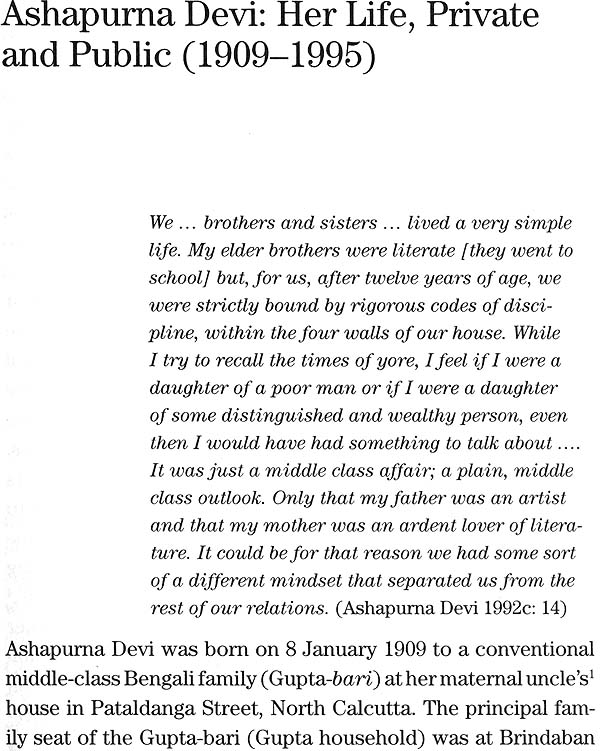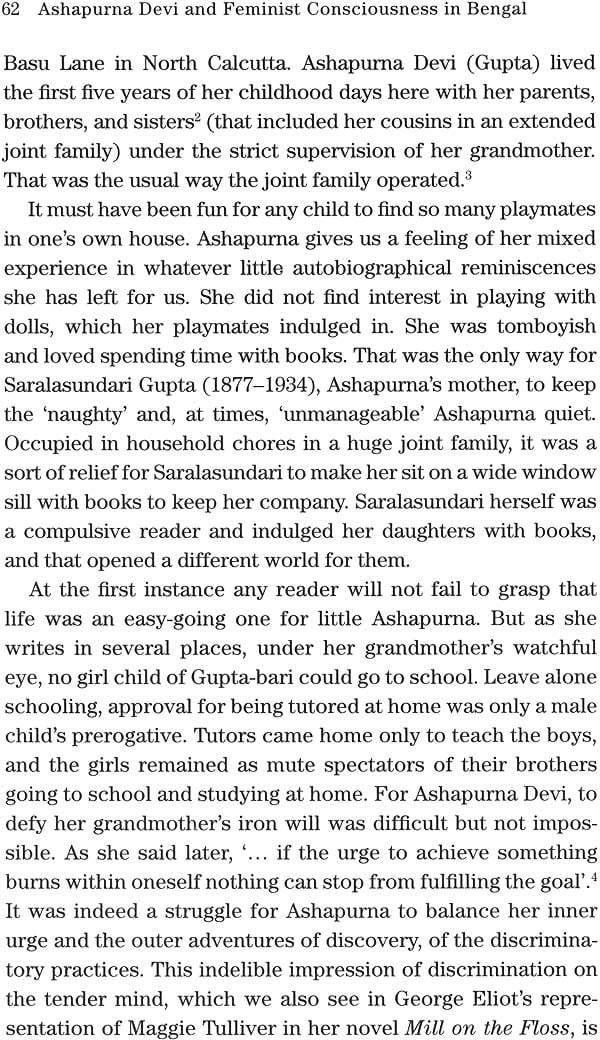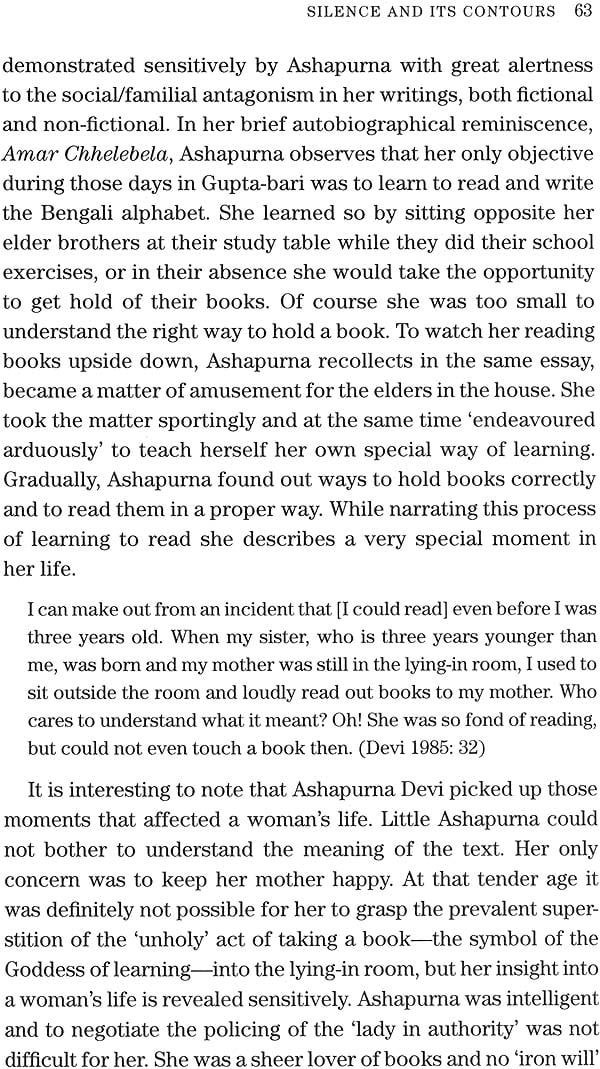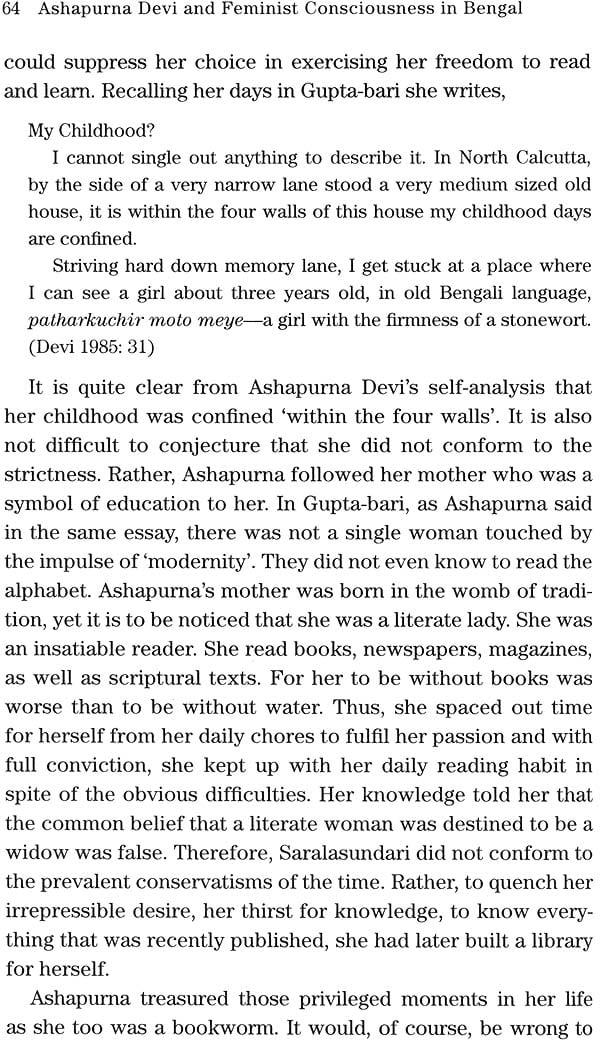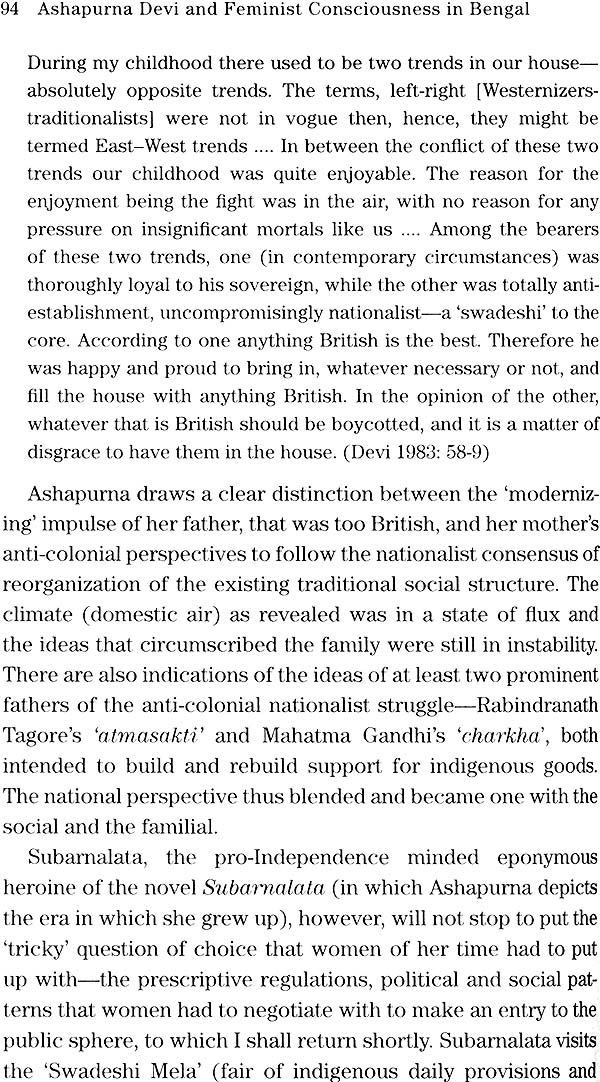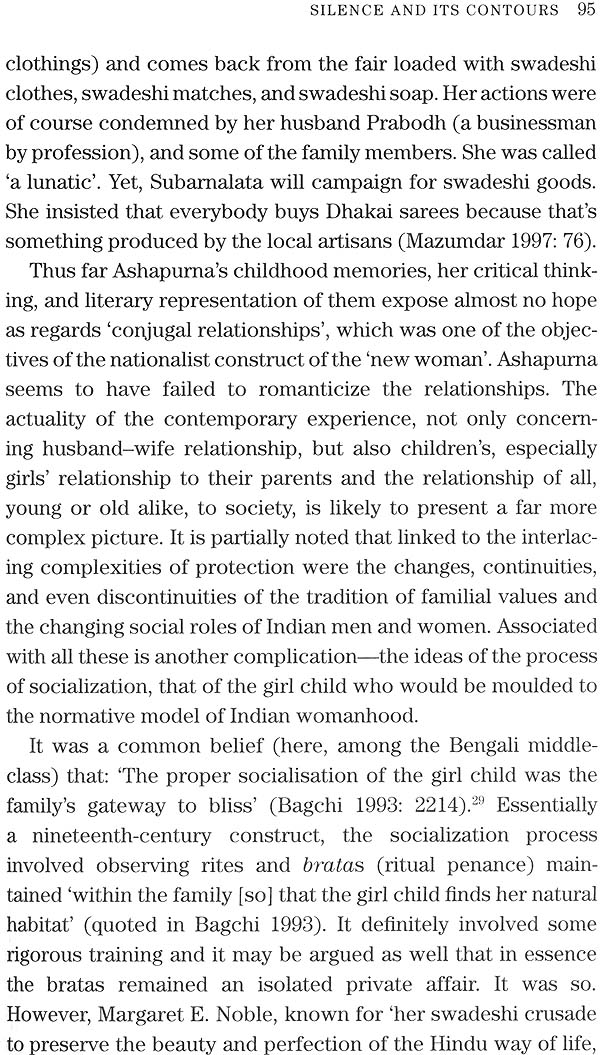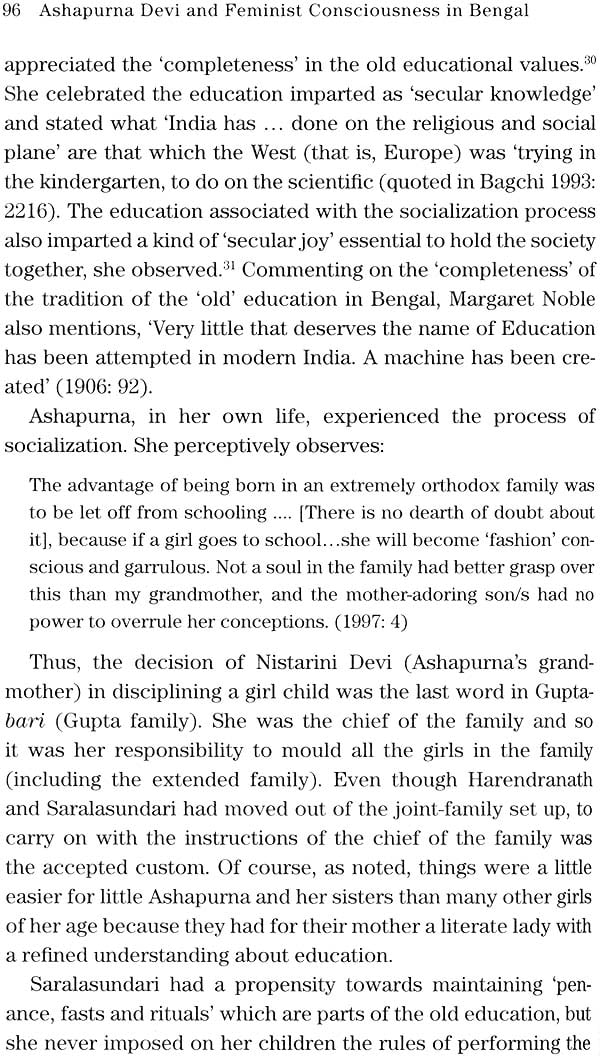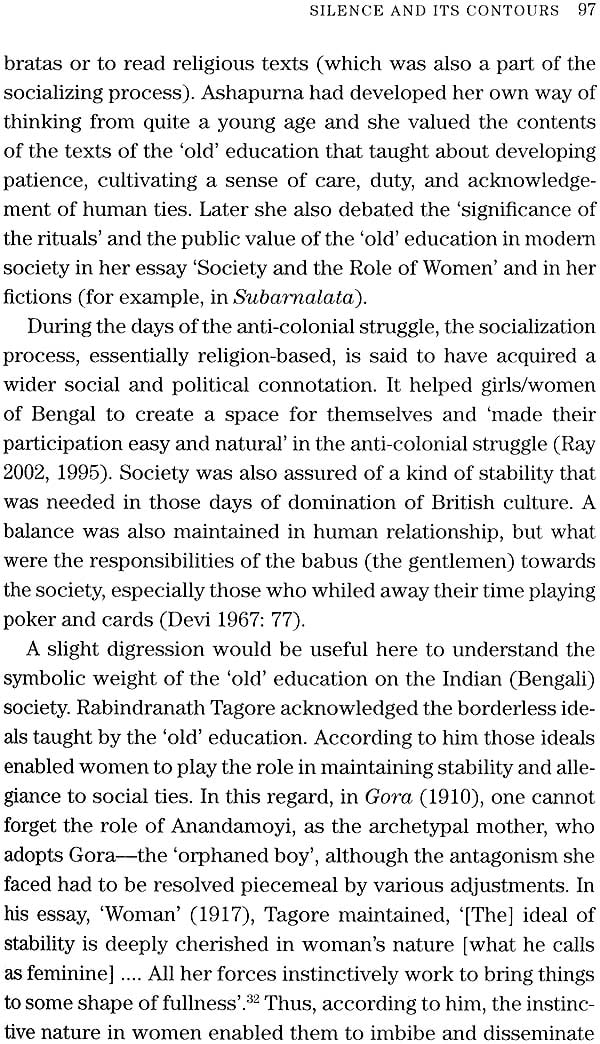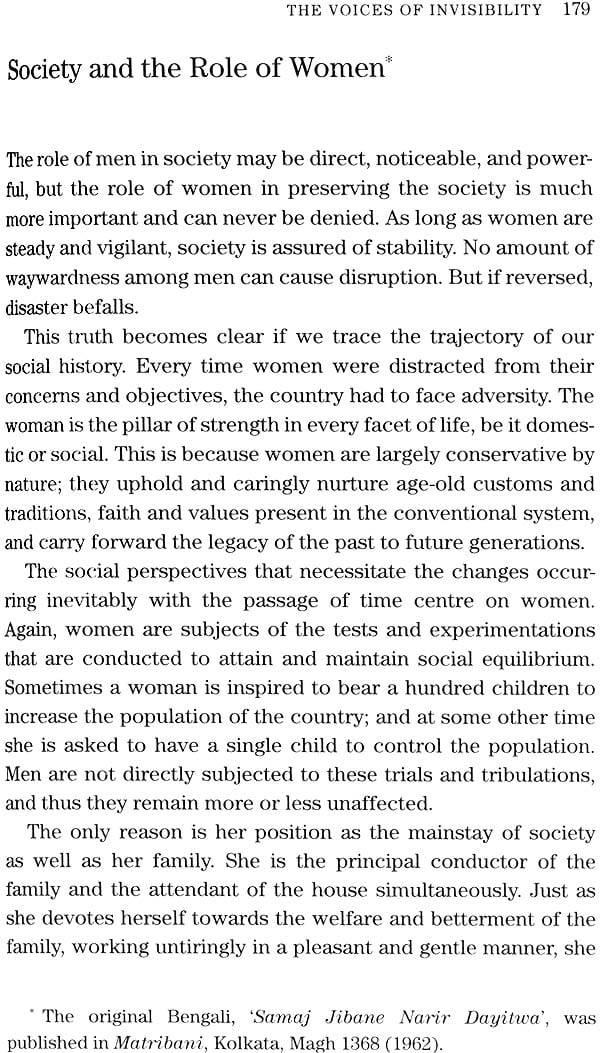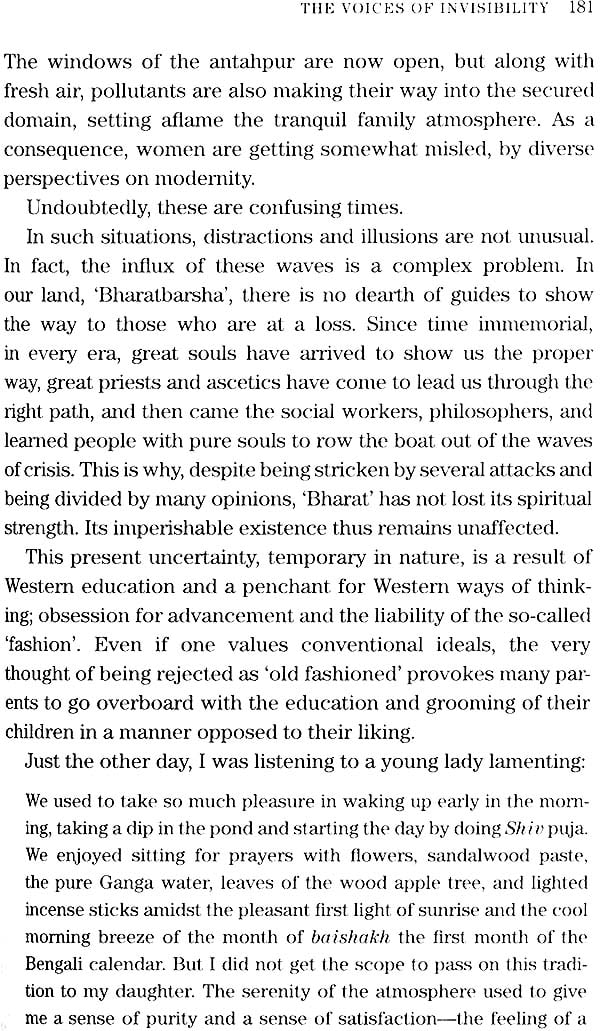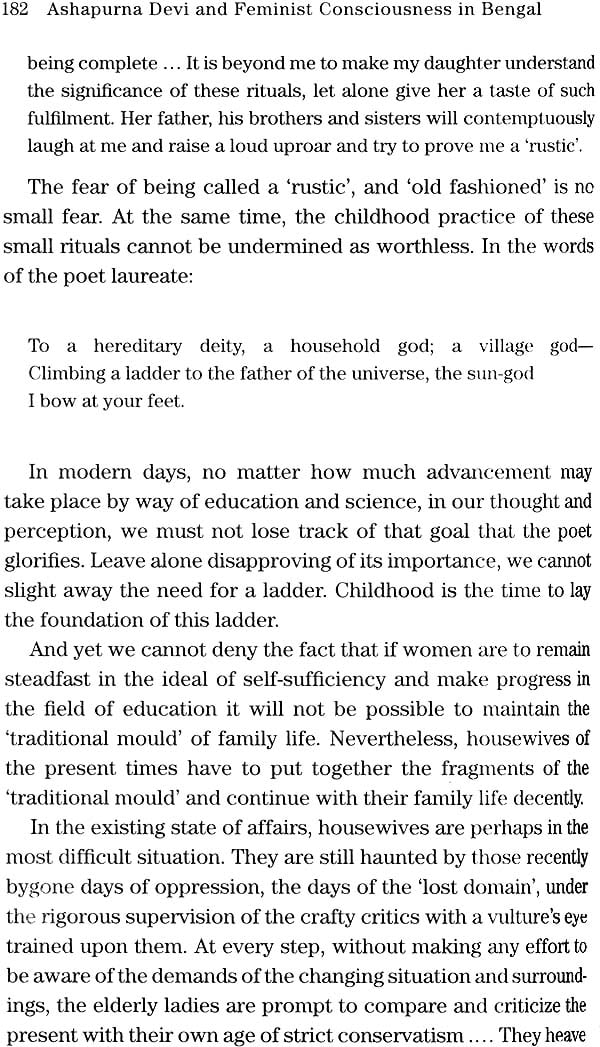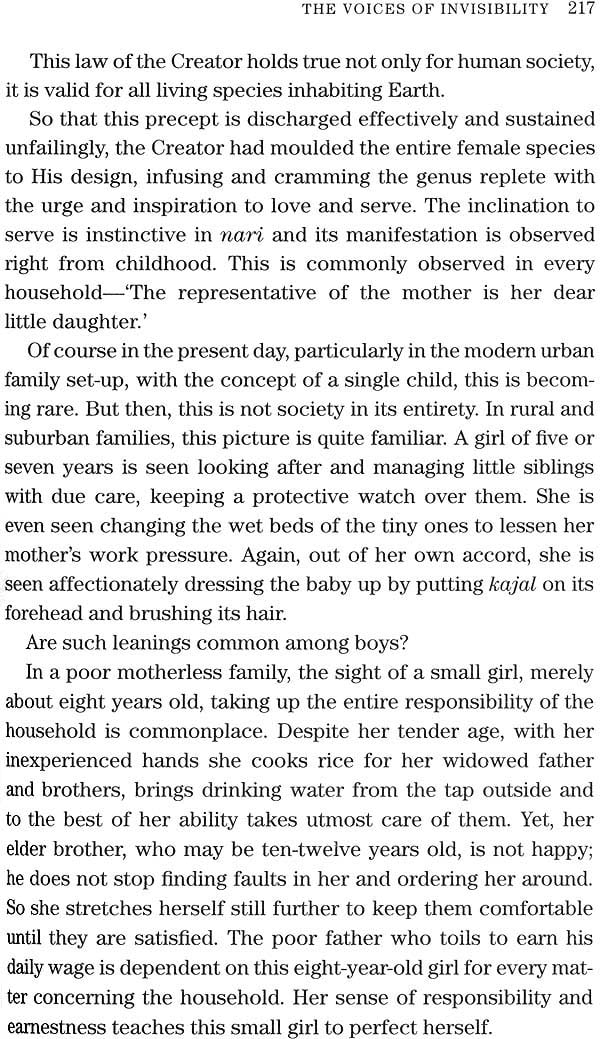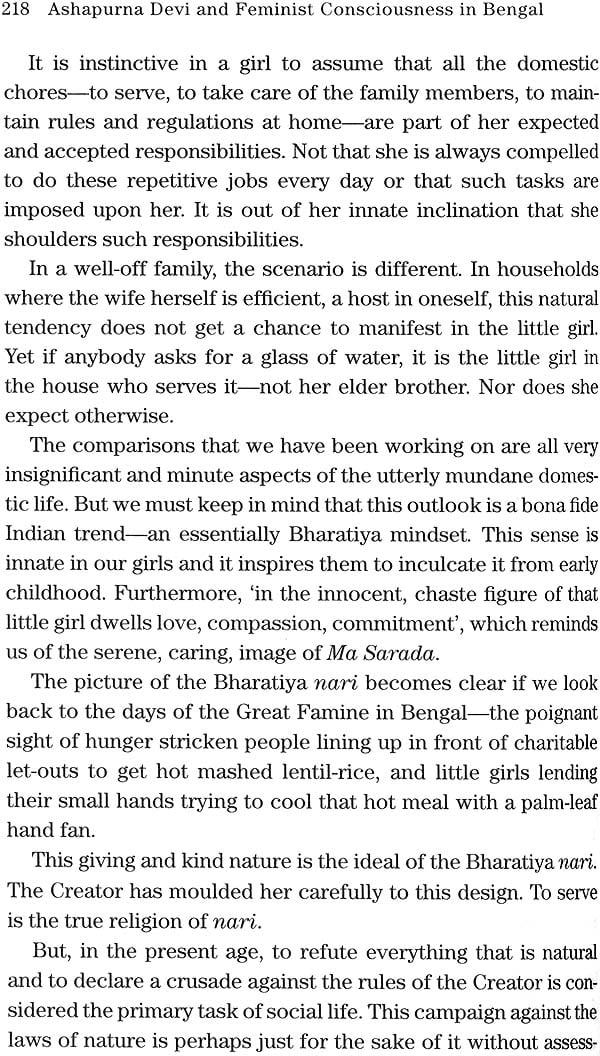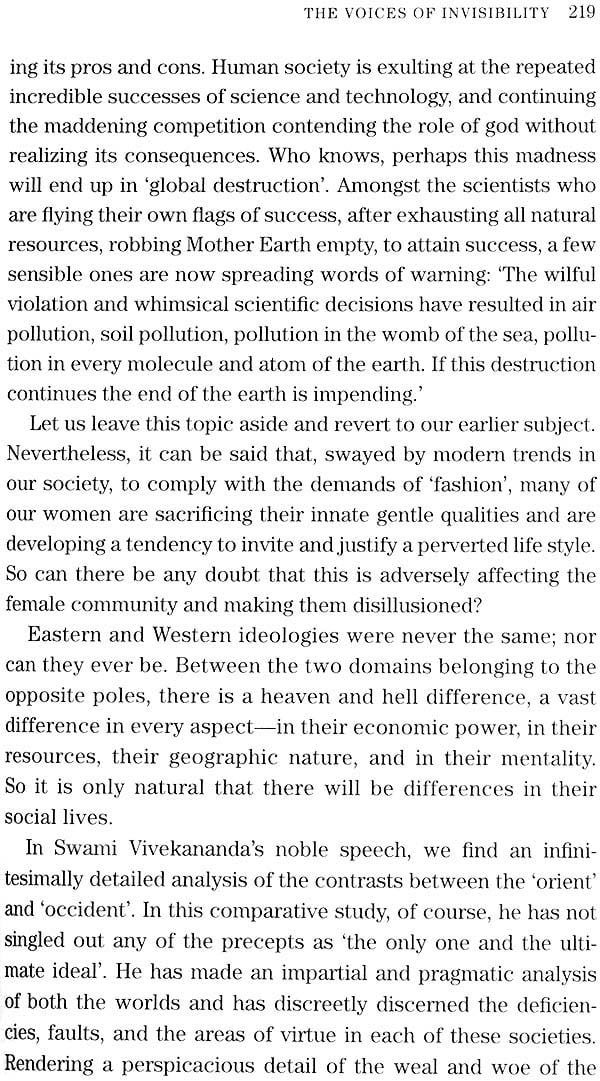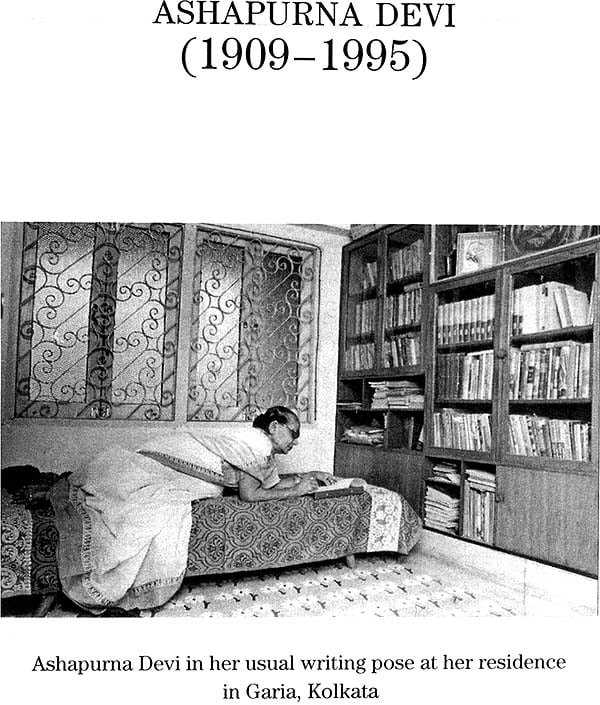
Ashapurna Devi and Feminist Consciousness in Bengal (A Bio - Critical Reading)
Book Specification
| Item Code: | NAL715 |
| Author: | Dipannita Datta |
| Publisher: | Oxford University Press, New Delhi |
| Language: | English |
| Edition: | 2015 |
| ISBN: | 9780198099994 |
| Pages: | 350 (30 B/W Illustrations) |
| Cover: | Hardcover |
| Other Details | 9.0 inch x 6.0 inch |
| Weight | 550 gm |
Book Description
Ashapurna Devi, one of the foremost Indian women writers, was born in colonial Bengal in 1909. She lived until 1995, witnessing the transitions and transformations that took place in society, culture, and family life during the colonial times and after India gained political independence. Recognized and honoured for her novels, short stories, and poetry in Bengali, Ashapurna wrote more than 240 novels, over 2,000 stories, and 62 books for children, along with many other unpublished essays and letters. Her stories are woven around her familiar world but are universal in appeal. Through her writings, Ashapurna casts an ironical eye on the patriarchal social norms.
Exploring Ashapurna's correspondence, essays, and interviews, this book opens new dimensions to our understanding of her writings. Her non-fiction works, which reveal her concern with the condition of women in society and their role in the family, help us to better understand the mind and art of one of the finest writers of our time.
Dipannita Datta is a researcher. She teaches at the Centre for Studies in Book Publishing, University of Calcutta, and also at the Centre for Translation of Indian Literatures, Department of Comparative Literature, Jadavpur University, Kolkata.
This volume pays homage to Ashapurna Devi, the Indian activist writer, who silently lived her life thinking and writing for women and working towards human solidarity.
Here is an attempt to read the feminist insights of Ashapurna Devi (1909-1995) through a selection of her fiction and non- fiction writings, particularly as it relates to an understanding of her impressive agency as a writer; for certainly Ashapurna wields an agency that enables her to strategically emphasize and minimize certain dimensions of her position as an Indian woman for specific socio-cultural purposes. To develop this understanding, an engagement with her writings is vital. For me the interest in Ashapurna started to pick up when I first met her for an interview on 9 March 1992 at her Garia residence, Calcutta (now Kolkata). I must admit that since then I have managed to read only some of her works.
Ashapuma Devi's birth centenary (2009-10) celebration brought, in general, a new impulse to understand her works and that ensued in a spate of publications. I, too, became enthusiastic once again. Initially, a brief biographical volume to fit in within the centenary year publications was conceptualized. That did not happen simply because Ashapurna is too vast to attempt finishing quickly. Her unexplored non-fiction works required some attention, however slim the intended volume was to be. Certain retrieval works also appeared necessary even as the urgency to complete the work, close to the centenary year, was pressing. The work was indeed quite challenging, but it progressed rather slowly, giving shape to this present introductory volume to Ashapuma's life and works.
Ashapurna's immensely thoughtful essays on women's issues in India, definitely, have not received enough attention. To give a comprehensive idea of Ashapurna's works, even though briefly, this volume offers a selection of translated five sample essays along with a few of her letters and interviews.
I would like to share a few words as to why I chose to include those essays, letters, and interviews as a part of the biographical work. Numerous books including the novels and short-story collections of Ashapurna Devi have been translated into English and many Indian regional languages. No serious attention has been paid to read her life through her non-fiction writings. I must state that her essays demonstrate a strong assertion of Ashapurna of the negotiation with and opposition between varied 'contradictions' and 'limitations' of working towards social change, although the latent values of the transactions are detailed by an apparently routine domesticity. Moreover, her non-fiction writings, especially her essays, are particularly important documents in the Third World context as they are essential social critique on the post postcolonial condition of women of Bengal (India). The 'lack' or the absence of these invaluable works from circulation prompted me to compile at least a selected few of them. It took me quite a while to get hold of the essays and selecting them, and I must say collecting the letters till the last was an extremely difficult job. Holding patience helped, and I received two important letters, one from Bangladesh and another from Prague.
In the course of my work I have received the support, friend- ship, and advice from many well-wishers, friends, colleagues, and teachers, and I would like to take this opportunity to thank all of them. My deepest gratitude goes to my teachers, Nabaneeta Dev Sen and Jasodhara Bagchi, for their unfailing encouragement and for helping to get me started with a critical awareness of Ashapurna's works.
I also thank Sanjukta Dasgupta and she indeed deserves a special aclmowledgement for suggesting first that I start working on Ashapurna's life. Discussions with Krishna Sen and Jharna Sanyal helped me significantly in clarifying certain tentative ideas. I wish to express my deep gratitude to them. I am equally thankful to Chandrava Chakravarty and Joyeeta Ray for sharing their invaluable time with me discussing and commenting on the first draft of this work.
The advice of my teacher, Subha Chakraborty Dasgupta, to think beyond mainstream feminisms, gave a fresh direction to my work and I have tried to extend the meaning of the variety of feminisms in this volume. I am indeed grateful to her.
I also thank my dear friend Chandrima Roy for offering her enthusiastic help at several phases, which was undeniably significant, especially while I was rushing through to complete the volume. Young, talented scholars, Abin Chakraborty, Subarnasree Ghosh, and Prasita Mukherjee, need a special mention. They were wonderful early readers and I thank them all for their perceptive responses to parts of this volume. All of them must share in any success which this book may merit; while, of course, its shortcomings are entirely my own.
I also extend my deep gratitude to Nupur Gupta, Ashapurna Devi's daughter-in-law. This book would not have been possible without her persistent help in providing me with the rare materials. I sincerely thank her for being with me at all occasions of needful discussion.
I also wish to thank Aveek Sarkar, the Chief Editor, ABP Pvt Ltd, for generously permitting me to publish the interviews (translated), which are crucial to understand the various strands of Ashapurna's thoughts on Indian feminism and her literary world. In, addition, I would like to thank Shiuli Biswas, Associate Vice President, ABP Pvt Ltd, for her support.
I cannot forget the inspiration from my long lost contact Indira Chowdhury who wrote, 'Are you the Dipannita I used to know in JU Women’s Studies?... All the best for your work! I do hope to see it in print’. That was very motivating at the primary stage of my work.
My special thanks goes to Dilip Mookherjee. Without his help I could not have established a link with Jhumpa Lahiri, which was needed for certain clarifications on her works on Ashapurna Devi. I am also grateful to Surajit Dasgupta, who has helped me to procure an important letter of Ashapurna Devi from Bangladesh. Martin Hribek’s effort to scan and send me Ashapurna’s letter to the Czech scholar, Hana Preinhaelterova, is sincerely acknowledges.
I thank Enakshi Chattyopadhyay for volunteering to translate her interview with Ashapurna, Which has facilitated the retention of the originality of their conversation. Unfailing help of Arun De, Abhijit Sen, and Saptarshi Mallick at different stages of my library works is also recognized sincerely. Last but certainly not least, and it is not at all enough, I wish to express my heartfelt thanks for the wonderful support from Dipankar and our dear son Kaustuv.
I also wish to take the opportunity to thank the editorial team at Oxford University Press (OUP) for their continued support throughout the publication process. In addition, I wish to thank the anonymous readers who reviewed the manuscript for OUP for their comments on the chapters. Their pointed and generous suggestions helped me to better formulate key aspects of my argument.
| Preface | ix | |
| A Critical Overview | 1 | |
| Silence and Its Contours | 59 | |
| I | Ashapurna Devi: Her Life, Private and Public(1909-1995) | 61 |
| II | Resisting Silence: Ashapurna Challenging Hegemony? | 90 |
| The Vices of Invisibility | 139 | |
| I | Essays by Ashapurna Devi | 141 |
| Prelude to Ashapurna's Essays | 141 | |
| Society and the Role of Women | 179 | |
| Present Education System and Women's Self- sufficiency | 187 | |
| Girls of Kolkata- Then and Now | 199 | |
| Laws Are Not the Sole Answer to Problems | 207 | |
| Women in the Service of Humanity | 216 | |
| II | Letters from and to Ashapurna Devi | 226 |
| The Other Side of Love | 247 | |
| Coversations with Ashapurna Devi | ||
| Subhdra Urmila Majumdar | 249 | |
| Partha Chatterjee | 255 | |
| Chitra Deb | 268 | |
| Jhara Basu | 292 | |
| Enakshi Chattyopadhyay | 295 | |
| Annexures | 303 | |
| A Brief Chronological Biography of Ashapurna Devi | 305 | |
| From Ashapurna's Dairy | 314 | |
| List of Translated Works of Ashapurna Devi in English | 323 | |
| Index | 327 | |
| About the Author | 337 |
